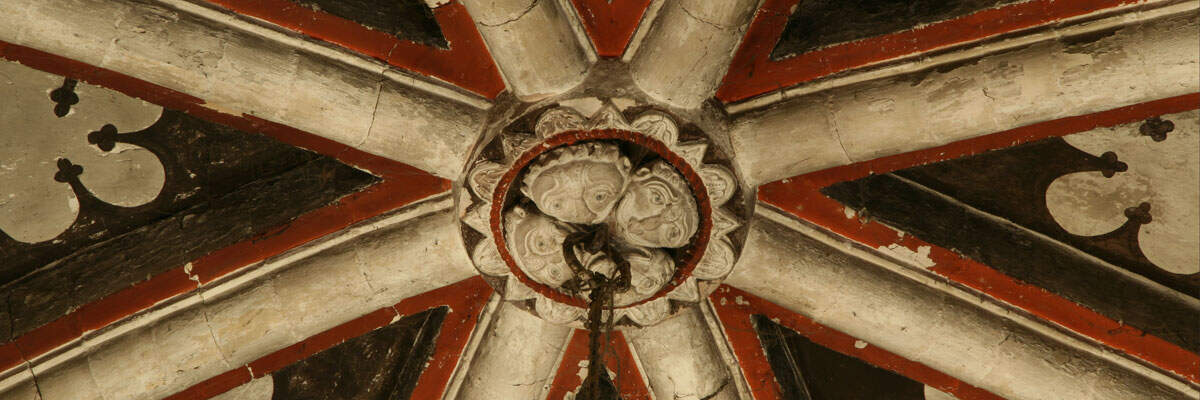Kea is a mile or so SW of Truro. The original Kea Church was located close the Truro River, a tributary off the River Fal, in a location that is now known as Old Kea. It was built in the 13th Century, with a tower added in the 15th Century, but was inconveniently located for many of the people living in the parish. In 1531 John Tregian, the Lord of the Manor, obtained a Royal licence to build a new church and cemetery in a more convenient location, but this was not acted on until after 1800. Permission was then granted to build a new church 2.5 miles to the west, in what is now called Kea, and to take down the original church. However, the tower was retained as a landmark, visible from Viscount Falmouth’s Tregothnan house.
The first replacement church was designed by James Wyatt, the renowned architect of Fonthill Abbey. The original Norman font was transferred to this building. However the church which has been described as ‘a very plain rectangular building’ was almost universally disliked. (Henderson described it as ‘hideous’, and according to the church guide it was ‘unsightly in the extreme’). Over time it developed structural faults, fell into disrepair, and was eventually demolished and replaced with a new building.
The current church at Kea was built in 1894, and was designed by G H Fellows Prynne. It is described in Pevsner as ‘the most attractive late C19th church in Cornwall (though very un-Cornish), beautifully situated in its sylvan landscape, the park of Killiow’. It is one of Fellows Prynne’s most successful church designs, in a strongly Arts and Crafts-influenced late Perpendicular style. The massing is straightforward with the nave roof swept over the aisles, and the south transept roof has a parallel ridge to the main roof. The porch is timber framed. The tower is in three stages with embattled parapets and a fine broach spire clad in copper. The walls are in cream Killas stone with granite dressings and prominent diagonal corner buttresses. The interior is generous and spacious; the original pews have been removed. The Romanesque font from the original Old Kea church was transferred once again into the latest church, and is located at the west end of the nave, immediately in front of the opening to the tower.



